Newly Translated Persian Manuscript Appears to Predict Modern-Day Demons
By Phyllis Wren
Senior Antiquities Correspondent / Demonology Hobbyist
Isfahan, Iran – A recently translated 15th-century Persian manuscript has stunned scholars by appearing to identify a rogue’s gallery of demonic entities bearing an uncanny resemblance to contemporary figures in global media and politics.
The manuscript, a rammal’s treatise on spells, portents, and celestial afflictions, was long believed to describe zodiac-linked demons and protective rites attributed to the wisdom of Solomon. But a closer study by Professor Emeritus Julian P. Tramm of the University of Cairo has unearthed something far more troubling.
“The demons in the text are named — and I want to be clear here, this is a direct translation — Rushlim Baug, Kanyus of the House of West, TaeTae Swiftius, Rudikh the Leaky-Faced, and Ban’on the Flame-Eater,” said Tramm.
Each entity is described in vivid watercolor, engaged in bizarre acts of torment: whispering lies into the ears of sleepers, spinning towers of flaming scrolls, gouging eyes with golden golf tees. One particularly striking image shows a bloated demon vomiting legal documents while perched on a golden toilet.
According to Tramm’s translation, the manuscript warns:
“These are not spirits of this age, but invaders from a fractured future. Sent to torment the children of Persia for sins not yet committed. Their arrival shall mark the Age of the Boiling Mind.”
Other demons include:
-
Thomasa Karla – a headless woman endlessly tweeting from a scroll of smoke.
-
Muskad ibn Tech – hurling goats at burning chariots while wearing emerald-plated armor and a half-melted crown.
-
Zuckúl, Lord of Eyes – whose face is a smooth orb of watching mouths.
Tramm notes that while many names appear phonetically warped, the descriptions are “alarmingly accurate” to their modern counterparts — especially “the one who feeds on forbidden documents and retreats into a bunker of mirrors.”
“We cannot say why the names are the same,” Tramm added. “Perhaps these are spirits who leak through time. Perhaps we’re just cursed with the same archetypes, repeating endlessly. Were they banished from ancient Persia and sent here or vice versa? Man, I need a drink.”
Ritual instructions in the manuscript range from the theatrical to the ominous: one recommends wrapping a demon effigy in news transcripts and hurling it into a pit of boiling frankincense. Another simply reads:
“Do not feed them. Silence. Prayer. And social disengagement.”
Asked whether these rites might exorcise the demons from our own time, Tramm hesitated:
“Look I’m just a scholar and translator, not a priest. But given the rules of this text and if the future is the past, and the past saw us coming… then yes. Possibly. But it would require mass intention and at least three competent astrologers. We may be short on both.”
The research team plans to publish a full translation later this year, pending clearance from the University’s Department of Temporal Ethics.
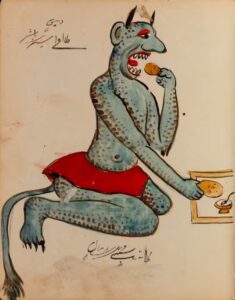
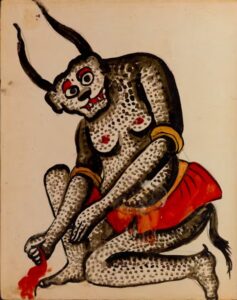
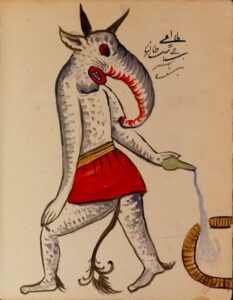

Forged in a crucible of commerce and silence, he arrives in under two days bearing gifts no soul requested. He has no shadow, no scent, no sleep. He does not knock. He is already inside.
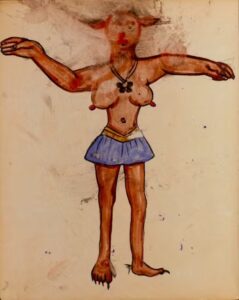
Clad in moonlight and marketing, she sings in hypnotic cadence, weaving spells of heartbreak and brand loyalty. Her voice lulls empires into dreamstates where memory becomes merchandise. Victims awaken knowing every lyric but forgetting their own names.
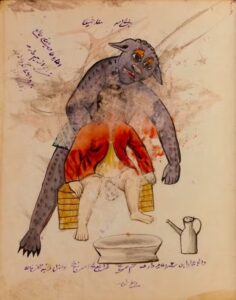
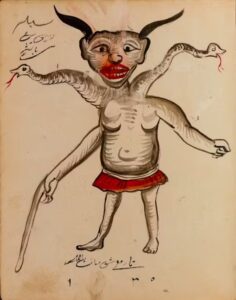
A weeping idol with endless wardrobe changes and a scroll of names he can no longer text. He casts vulnerability as power, haunts playlists of the emotionally stunted, and loops desire into dependence. All feelings, no growth.

A purple demon obsessed with conquest, escape, and verification. He builds thrones that collapse beneath him, then sells the rubble as innovation. He dreams of Mars, fears mortality, and cannot pass the captcha floating above his head.
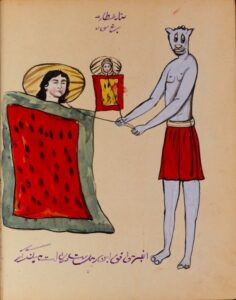
He spins webs through the minds of dreamers, drawing thought and speech from their mouths as they sleep. His gift is connection; his curse is control. Those marked by him awaken with optimized desires and the irresistible urge to scroll.
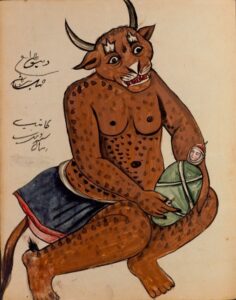
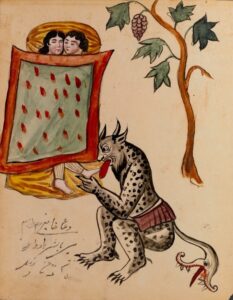
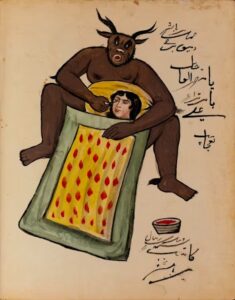
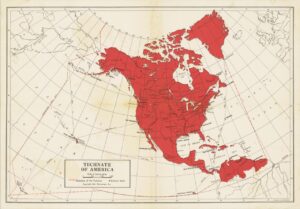

Be First to Comment